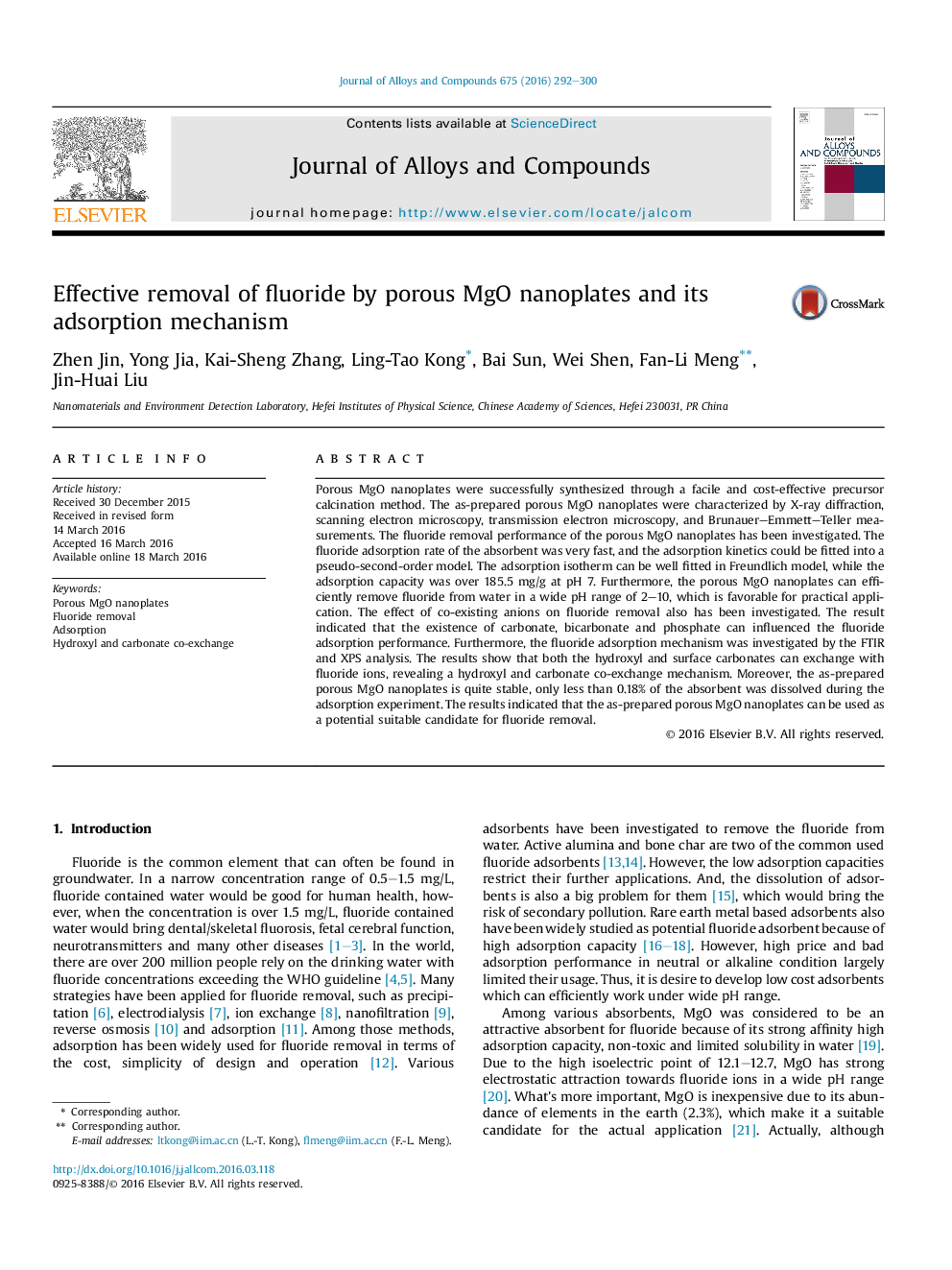| کد مقاله | کد نشریه | سال انتشار | مقاله انگلیسی | نسخه تمام متن |
|---|---|---|---|---|
| 1605742 | 1516218 | 2016 | 9 صفحه PDF | دانلود رایگان |

• Porous MgO nanoplates were synthesized through a facile precursor calcination method.
• The adsorption capacity for fluoride is larger than 185.5 mg g−1.
• The porous MgO nanoplates can efficiently removal fluoride at a wide pH rang of 2–10.
• A novel hydroxyl and carbonate co-exchange mechanism was reported.
• The porous MgO nanoplates is quite stable during the fluoride removal process.
Porous MgO nanoplates were successfully synthesized through a facile and cost-effective precursor calcination method. The as-prepared porous MgO nanoplates were characterized by X-ray diffraction, scanning electron microscopy, transmission electron microscopy, and Brunauer–Emmett–Teller measurements. The fluoride removal performance of the porous MgO nanoplates has been investigated. The fluoride adsorption rate of the absorbent was very fast, and the adsorption kinetics could be fitted into a pseudo-second-order model. The adsorption isotherm can be well fitted in Freundlich model, while the adsorption capacity was over 185.5 mg/g at pH 7. Furthermore, the porous MgO nanoplates can efficiently remove fluoride from water in a wide pH range of 2–10, which is favorable for practical application. The effect of co-existing anions on fluoride removal also has been investigated. The result indicated that the existence of carbonate, bicarbonate and phosphate can influenced the fluoride adsorption performance. Furthermore, the fluoride adsorption mechanism was investigated by the FTIR and XPS analysis. The results show that both the hydroxyl and surface carbonates can exchange with fluoride ions, revealing a hydroxyl and carbonate co-exchange mechanism. Moreover, the as-prepared porous MgO nanoplates is quite stable, only less than 0.18% of the absorbent was dissolved during the adsorption experiment. The results indicated that the as-prepared porous MgO nanoplates can be used as a potential suitable candidate for fluoride removal.
Journal: Journal of Alloys and Compounds - Volume 675, 5 August 2016, Pages 292–300